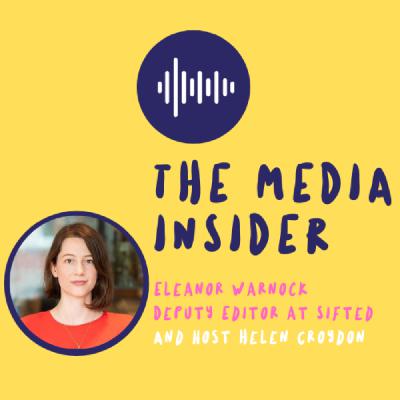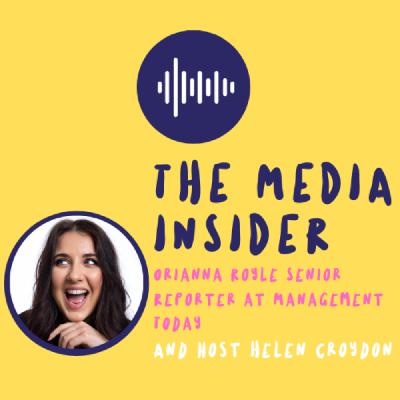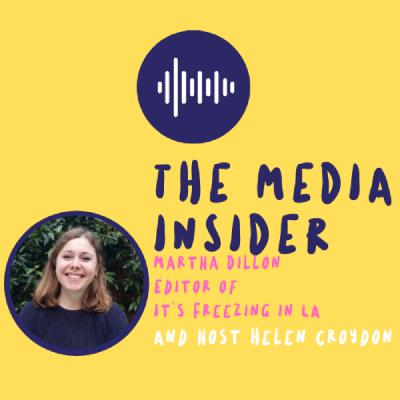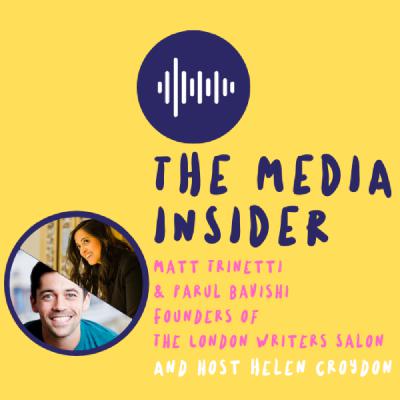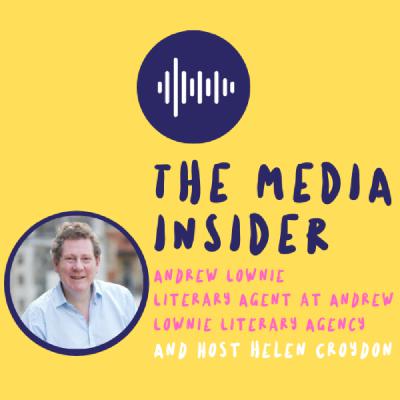Discover The Media Insider Podcast
The Media Insider Podcast

The Media Insider Podcast
Author: themediainsiderpodcast
Subscribed: 14Played: 120Subscribe
Share
© Copyright 2020 All rights reserved.
Description
Pitching stories or ideas to the media is hard. Each episode, author and journalist-turned PR, Helen Croydon interviews a commissioning editor, writer or producer at a high profile media outlet on what, why, who and when they commission a story. If you want to understand how journalists find interviewees and choose stories, this is one for you. Helen helps get people get into the media with https://thoughtleadershippr.com/
31 Episodes
Reverse
News Editor at Courier Media, Karis Hustad, discusses the inspiring small business stories they commission for the magazine and weekly newsletter. She shares the importance of authenticity, quality, and clearly explaining the 'why' behind pitching yourself to Courier. Karis explores some interesting trends like gen-z small business owners, the evolution of the 'gig CEO,' and much more.
Editor at Prospect Magazine, Alan Rusbridger, shares the regular formats for the monthly print and digital publication and what makes the cut for an ‘intellectually stimulating’ read. From short-form profiles at the front; to long-reads with a new take on a global issue; to the popular culture and books sections at the back; find out when and how to pitch a story that gets noticed. As former editor-in-Chief of The Guardian, Alan has decades worth of news sense worth noting for both PRs and freelance journalists pitching to the media.
Deputy Editor at Sifted, Eleanor Warnock, discusses what she looks for in a pitch when commissioning for the 100k-users-a-month publication serving startups. She gives the inside scoop on the high level leader section ‘Brunch with Sifted’, what makes an opinion piece, plus the most common feedback points she gives to PRs who pitch to her.
Senior reporter at Management Today, Orianna Rosa Royle discusses what makes a story for the 80k-users-a-month publication. CEO interviews are the most common format but what makes the cut? For a journalist who gets ‘an email pitch a minute’ Orianna knows instantly what has PR potential and she gives us her inside tips.
Senior Features Writer at The Daily Mirror, Natasha Wynarczyk, discusses how a pitch from a PR or member of the public turns into coverage and why you should never pitch via social media. Print is certainly not dead and Natasha reminds us of the perks to having an exclusive print feature. XaHEFnoJKaafQX78LYzt
Francesca Cassidy, deputy editor of Raconteur, discusses exciting new online content, including regular series such as “How I Became A….” and how PRs or businesses can tailor their pitches for Raconteur’s formats. Plus the hunt for diverse journalists!
Cheryl Cole is the Editor of DiversityQ Magazine, a publication giving advice to businesses on diversity, inclusion, and equality in the workplace. Cheryl talks us through their story formats including why they love opinion pieces and thought leadership content. Plus, her media pitching advice: if you have to work to make it sound relevant, it probably isn't.
Zena Alkayat is founder of Bloom Magazine, a publication about gardening and nature with a modern angle. Zena shares her tips on how to pitch a story including how to differentiate passion from expertise, why 'the story' is always the most important wording of your pitch and how a new partnership with a book publisher means they're scouting for new nature writers! XaHEFnoJKaafQX78LYzt
Jess Austin is Communities Editor for Metro online, commissioning Metro blogs and first person pieces. She discusses what the editorial team look for, why using fresh writers is so exciting, and, how to pitch to their regular series such as 'what it feels like to...' 'immigrant stories' and 'hello, my name is....'
Plus, what you. need to know if you fancy pitching yourself as a columnist.
Martha Dillon, editor of It’s Freezing in LA, a publication covering environmental issues, gives us pitching tips for PRs and freelance writers. She discusses different feature formats for the magazine, why she’s on the lookout for young writers and defining a story angle in a pitch.
Lucy Dunn, lifestyle editor, of Telegraph Magazine talks about the new editorial approach since The Telegraph went digital-first, why journalists are going 'below the line', the resurgence of long-reads and what's needed from PRs and journalists in their pitches for the magazine.
The founders of The London Writers Salon discuss the different roles of editors at book publishers, the pros and cons of traditional publishing versus self-publishing, new ways for writers to promote their work and how to pursue a creative career.
BnX42O5QtmpGjlgPjOTT
Pia Velasco, Senior Beauty and Fashion editor of Hello Giggles, discusses the regular features, reviews and pages of the beauty pages.
Plus, how she sifts through 500 PR emails a day, the phrases that make her hit delete, the hot trends editors want to explore stories on and why PRs should NEVER ask, ‘What are you working on?’
Literary agent Andrew Lownie gives his advice on pitching a book to an agent, including what to put in a one page pitch, what the trends are in publishing, what he looks for in a writer and some of the common fails of pitching.
Huck covers everything from adventure sport to music to photography to politics and activism, all through the lens of individualism.
With an audience of half a million a month, split between UK and US, Niall, like many editors, gets 100s of pitches a day for coverage. He discusses what they look for in a story, and what to put in your pitch for different types of stories.
Jack Sommers from Insider (the new name for Business Insider) reveals when to pitch to an editor and when to pitch to a reporter; what makes a 'list' piece; the importance of specifics in a media pitch; and why Business Insider will now be known as Insider - and what we can expect from the other exciting 'Insider' publications.
Punteha van Terheyden has been writing and editing true-life stories for 12 years on women's magazines such as Take a Break.
She set up her own platform, Lacuna Voices, to give a home to the stories the traditional media won't take. In this episode we discuss modernising the traditional mould of what makes a good real-life story, what PRs can add to a press release to get a story picked up and why journalism is the worst industry for not getting email replies.
What is 'branded journalism', and how does the content get commissioned? Are there still opportunities for PRs and writers to pitch? This month's guest is Cate Sevilla, who has held editorial roles on various national digital titles such as BuzzFeed and The Pool, and who now works on branded titles.
Plus, why the media is the only industry to delay payment to writers and how freelance writers are fighting back.
Stewart Rogers is managing editor of Grit Daily. He shares his advice on good and bad pitches, including how much lead time is needed, how to suggest an 'exclusive' and the damaging fallout that can happen when PRs use mailing lists to contact journalists.
Grit Daily is a leading tech news publication with lifestyle and entertainment thrown in. It has 2 million readers per month.
How can you get a story into some of the most popular women's magazines? The different sections in Chat, Woman and Woman's Own include 'From the Heart', 'Letter's To', 'Shock Reads', 'The Moment I Knew,' 'Call That Justice,' 'Don't Tell me I Can't' and many more.
Commissioning editor Emmie Harrison West talks about what sets them apart, how she finds these stories, and why journalism is so important to give a platform to charities and women with brave or inspirational stories.




